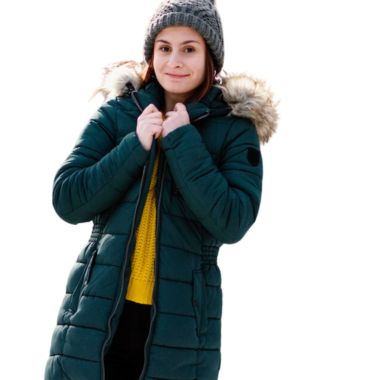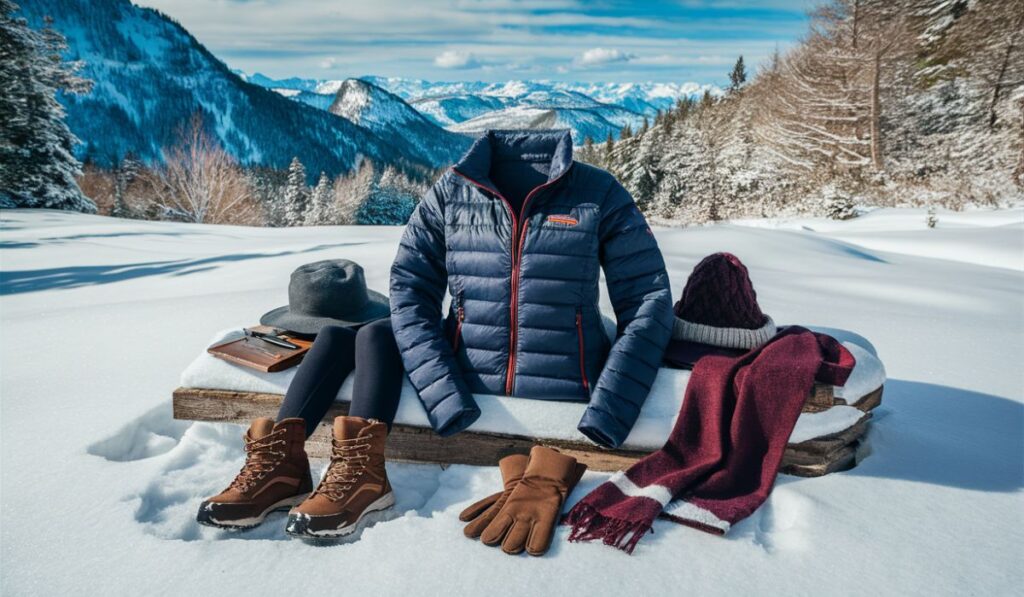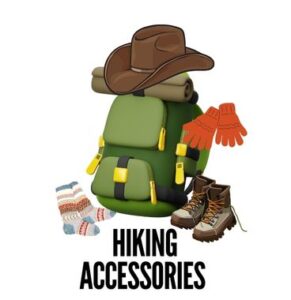Hiking outfits play a crucial role in the success of any adventure. Whether you’re scaling mountains in the winter or enjoying a sunny trail in the summer, having the right gear ensures comfort, safety, and overall enjoyment. In this blog, we’ll guide you through the best clothing choices for hiking, with a focus on both kids and adults, covering everything from kids’ hiking boots to a winter hiking outfit and more. Let’s dive into how to prepare for your next outdoor adventure with the perfect hiking outfit.

Kids Hiking Boots: Why Footwear Matters
Starting with one of the most important pieces of hiking gear—footwear. Whether for adults or children, having the right boots is critical for stability, comfort, and protection. For children, investing in kids hiking boots that are durable and offer ankle support is essential. These boots are designed to protect young feet from rough terrain, providing the grip they need to navigate trails without slipping.
Key features while choosing kids hiking boots:
Just like adults, kids need reliable footwear that can handle various terrains, so make sure their hiking boots are well-suited for the environment they’ll be exploring.
Trousers for Hiking: Choosing the Right Bottoms for Your Trek
Next up on your hiking outfit checklist is a solid pair of trousers for hiking. The type of trousers you choose will depend on the season and the terrain.

• Summer
For warm-weather hikes, lightweight, breathable trousers are ideal. Look for moisture-wicking fabric that dries quickly to keep you comfortable even if you sweat.
• Winter
For colder months, you’ll need insulated trousers that can protect you from the wind and cold. Some hiking trousers come with a fleece lining, perfect for maintaining warmth during your winter adventures.
The key to choosing the best trousers for hiking is to find a balance between durability and comfort. Ensure they have a good range of movement, especially if you’re going to be scrambling over rocks or steep paths.
Hiking Jacket: Layering for the Elements
A good hiking jacket is another essential piece of your hiking outfit. This is where layering becomes important, as the weather can change rapidly, especially at higher altitudes.
• Waterproof Jackets
For rainy or unpredictable weather, a waterproof hiking jacket is a must. Look for jackets with breathable fabrics that keep water out but allow moisture (like sweat) to escape, ensuring you stay dry and comfortable.

• Insulated Jackets
If you’re hiking in colder conditions, opt for an
insulated hiking jacket. These jackets trap body heat and are great for winter hikes when temperatures drop significantly.
• Lightweight Jackets
For summer hikes, you’ll want a lightweight, windproof jacket. Even in warm weather, trails can get windy, especially on ridgelines or in higher elevations.
A versatile jacket is key to ensuring you stay protected from the elements without overheating or feeling too bulky.
Plasters for Hiking: Small but Essential
It may seem like a minor item, but having plasters for hiking (or blister pads) in your pack is a game-changer. Blisters are one of the most common issues hiker’s face, especially if you’re breaking in new boots or hiking over long distances. While not technically part of your hiking outfits, blister plasters should be part of your hiking gear for a comfortable trek.
Make sure to carry plasters for hiking that are:
Being prepared with blister plasters can prevent small problems from turning into painful experiences that could cut your hike short.
Winter Hiking Outfit: Staying Warm in Cold Weather
Hiking in winter presents a unique set of challenges, primarily related to staying warm and dry. Building a solid winter hiking outfit involves multiple layers to keep you insulated but still able to move comfortably.
Base Layer:
Start with a moisture-wicking base layer to keep sweat off your skin. Merino wool is a popular option because it’s warm, breathable, and doesn’t retain odors.

Mid Layer:
This layer should keep you warm. A fleece jacket or a down vest is perfect because they hold in heat without adding too much bulk.
Outer Layer:
Your outer layer should be a waterproof and windproof jacket, designed to keep out the elements while maintaining breathability.
Hiking Pants:
Go for insulated hiking pants with a waterproof shell to keep your legs warm and protected from snow and icy winds.
Accessories:
Remember to bring a hat, gloves, and warm socks. Your extremities lose heat the quickest, so make sure they’re well-protected.
Having a proper winter hiking outfit ensures that you stay warm and dry, no matter how cold or snowy the trail becomes.
Summer Hiking Outfit Women: What to Wear in Warm Weather
For women, choosing a comfortable summer hiking outfit is all about breathability and protection from the sun. Here’s a list of what to include:
Top:
Choose a tank top or t-shirt that keeps you dry. Look for fabrics like polyester or merino wool that are lightweight and keep sweat off your skin.
Bottoms:
Lightweight trousers for hiking or shorts are a great option in the summer. If you choose shorts, make sure they provide enough coverage and have good pocket space for essentials like sunscreen or snacks.
Footwear:
Pair your hiking outfit with breathable hiking shoes or boots, depending on the terrain. In warm weather, it’s important to have shoes that allow air to circulate, preventing your feet from overheating.
Sun Protection:
Don’t forget a wide-brimmed hat and sunglasses to shield your face and eyes from harmful UV rays. Lightweight sun-protective clothing is also a good option for women who want extra coverage without overheating.
A summer hiking outfit for women is all about keeping cool, comfortable, and protected from the elements. Having a balance between lightweight fabrics and protective gear will ensure you enjoy your hike without feeling weighed down.
Accessories to Complete Your Hiking Outfit
While the main components of your hiking outfit—boots, trousers, and a jacket—are crucial, there are a few accessories that can make your hike even more enjoyable and comfortable:
Socks:
Invest in moisture-wicking, padded hiking socks. Avoid cotton because it retains moisture. Instead, go for wool or synthetic blends.

Hat and Gloves:
For cold weather hikes, bring along a thermal hat and gloves. For summer hikes, a hat with UV protection is essential.
Backpack:
A lightweight, waterproof backpack is perfect for storing snacks, water, and extra layers. Make sure it has adjustable straps and good back support.
Conclusion
Your hiking outfit plays a vital role in ensuring you enjoy your time on the trail. Whether you’re putting together a summer hiking outfit for women or preparing a winter hiking outfit for colder months, the key is to focus on comfort, protection, and versatility. From kids hiking boots to a reliable hiking jacket, being well-prepared with the right gear will make your hiking experience both comfortable and memorable.
FAQs
For summer hikes, opt for lightweight, moisture-wicking clothing. A breathable t-shirt or tank top, hiking shorts or trousers, and breathable hiking boots are ideal. Don’t forget sun protection in the form of a hat and sunglasses.
A waterproof hiking jacket with breathable fabric is best for rainy hikes. Look for jackets with sealed seams and adjustable hoods to ensure you stay dry.
Kids need durable, waterproof kids hiking boots, comfortable hiking trousers or shorts, a lightweight t-shirt, and a waterproof jacket. Always bring extra layers in case the weather changes.
For winter hikes, wear a moisture-wicking base layer, an insulated mid-layer (like fleece), and a waterproof, windproof outer layer. Don’t forget warm accessories like a hat and gloves.
